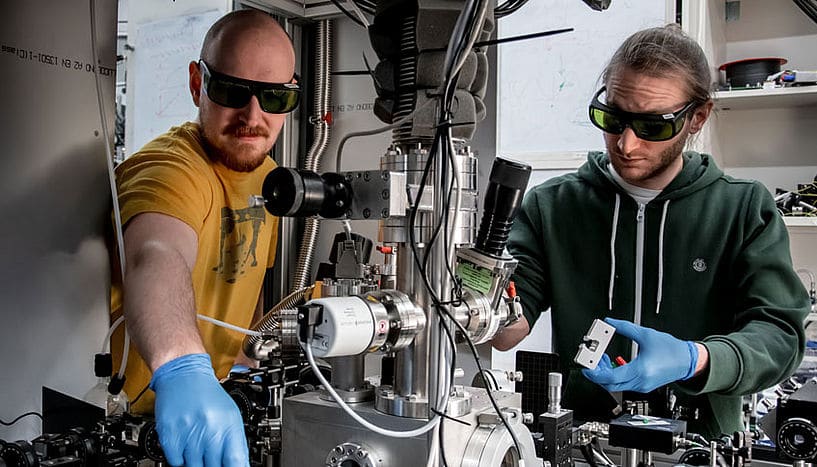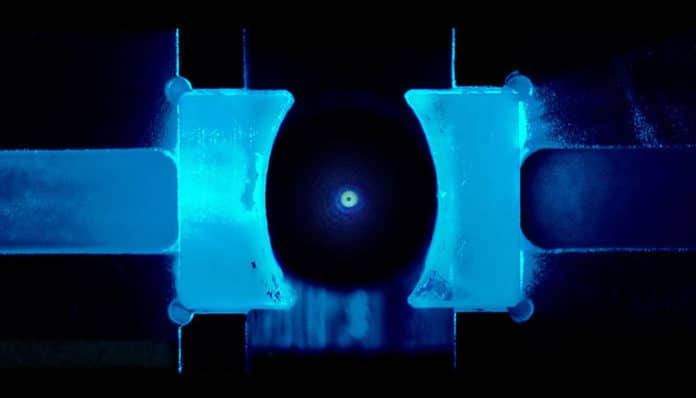Notably, the quantum properties of individual atoms can be controlled with laser light. Indeed, even enormous clouds of several particles can be driven into the quantum regime, offering to ascend to macroscopic quantum states of matter, for example, quantum gases or Bose-Einstein condensates.
A subsequent energizing step is to extend this level of quantum control to solid-state objects. Rather than atomic clouds, the density of a solid is a billion times higher, and all atoms will undoubtedly move together along the object’s center of mass.
However, this is not a simple task. A first step for achieving such quantum control is to isolate the object under investigation from influences of the environment and to remove all thermal energy—by cooling it down to temperatures very close to absolute zero (-273.15 degrees Celsius) such that quantum mechanics dominates the particle’s motion.
To show this, scientists in Austria conducted an experiment where they used lasers to levitate and cool a glass nanoparticle into the quantum regime. The glass bead was approximately 1000 times smaller than a grain of sand and consists of a few hundred million atoms.

The isolation procedure was done via optically trapping the particle in a tightly focused laser beam in a high vacuum. Yet, the challenging task was to cool down the particle motion into its quantum ground state.
Lead author Uros Delic from the University of Vienna said, “Laser cooling via atomic transitions is well-established and a natural choice for atoms, but it does not work for solids.”
Thus, scientists decided to implement the laser-cooling method proposed by Austrian physicist Helmut Ritsch at the University of Innsbruck and, independently, by study co-author Vladan Vuletic and Nobel laureate Steven Chu.
Delic said, “We have upgraded our experiment and are now able not only to remove more background gas but also to send in more photons for cooling. In that way, the motion of the glass bead can be cooled straight into the quantum regime.”
“It is funny to think about this: The surface of our glass bead is extremely hot, around 300 degrees Celsius because the laser heats the electrons in the material. But the motion of the center of mass of the particle is ultra-cold, around 0.00001 degrees Celsius away from absolute zero, and we can show that the hot particle moves in a quantum way.”
The analysts are amped up for the possibilities of their work. The quantum motion of solids has additionally been examined by different groups all around the world. Although, experimental systems comprised of nano-and micromechanical resonators—generally, drums or diving boards that are cinched to a rigid support structure.
Nikolai Kiesel, co-author and Assistant Professor at the University of Vienna, said, “Optical levitation brings in much more freedom: By changing the optical trap—or even switching it off—we can manipulate the nanoparticle motion in completely new ways.”
The study– was conducted in the collaboration between scientists from the University of Vienna, the Austrian Academy of Sciences, and the Massachusetts Institute of Technology (MIT)- published in journal Science.
